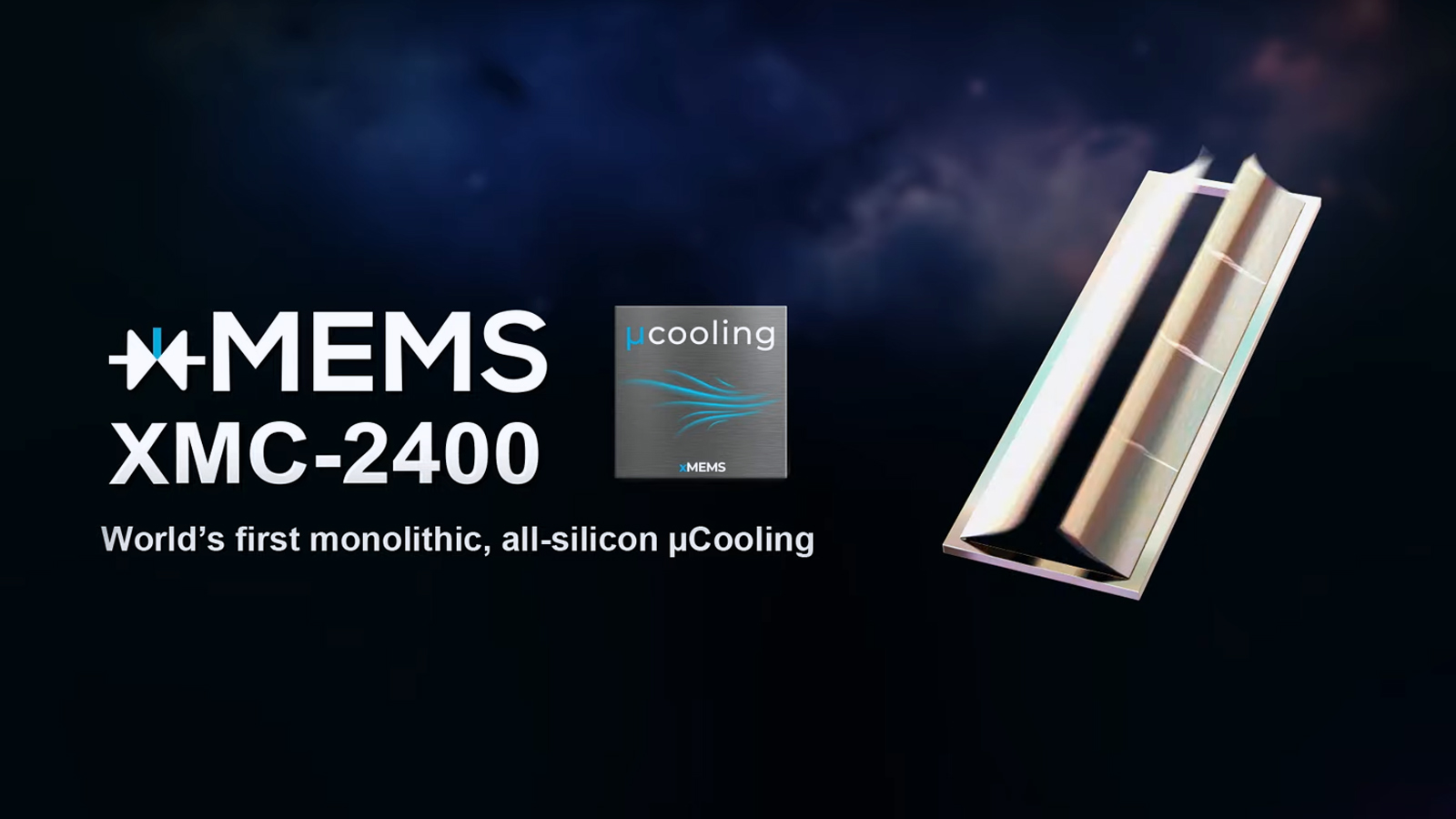Tiny cooling fan-on-a-chip designed for phones to be deployed in AI data centers
This tiny fan will fit on the tiniest of chips.

AI data centers will start using xMEMS Labs’ tiny, all-silicon, active fan-on-a-chip cooling solution, µCooling, initially designed for smartphones and mobile devices.
According to GamesBeat, this technology will be deployed in small high-performance optical transceiver DSPs with a maximum TDP of 18W or higher. The tiny cooling chip can deliver up to 5 watts of localized cooling, and its small size and lack of moving parts mean it can be reliably deployed in hard-to-reach places and require no maintenance at all.
Although the amount of heat these fans remove might seem small, it is still significant enough to reduce DSP temperatures by 15%. This decreases the thermal load on the system, allowing it to operate faster for much longer, reduce errors, and increase its service life. xMEMS Labs also isolated the airflow channel from the transceiver’s optical and core electronic components. This ensures that any dust or contaminant picked up by its micro fan will have no way to interfere with the DSP’s operation.
“As data center interconnect demands scale rapidly with AI workloads, thermal bottlenecks are emerging at the component level — especially in optical modules that are sealed, power-dense, and space-constrained,” xMEMS Labs Marketing VP Mike Housholder said in a statement. “µCooling is uniquely positioned to solve this by providing true in-module active cooling with no compromise to optics or form factor.”
xMEMS Labs might be the first to deploy a micro cooling solution in an AI data center, but it isn’t the only one working on an extremely compact fan with few or no moving parts. Frore System has been working on its solid-state cooling chip since 2022, which uses piezoelectric vibrations to drive airflow, similar to xMEMS Labs' µCooling chip. It has even introduced slimmer versions called the AirJet Mini Slim and applied them to an SSD, which doubled its performance. On the other hand, Ventivia is taking a different approach with its Ionic Cooling Engine, which uses an electric field to ionize air particles and force them to flow in one direction, creating cooling.
As chips and devices become smaller and more power-dense, these tiny cooling solutions will be crucial for helping our tech keep its cool. And while we might not yet see these fans in phones and laptops this year, they’re slowly coming online in different components that most people may never see.
Follow Tom's Hardware on Google News to get our up-to-date news, analysis, and reviews in your feeds. Make sure to click the Follow button.
Get Tom's Hardware's best news and in-depth reviews, straight to your inbox.

Jowi Morales is a tech enthusiast with years of experience working in the industry. He’s been writing with several tech publications since 2021, where he’s been interested in tech hardware and consumer electronics.
-
Misgar "Frore System has been working on its solid-state cooling chip since 2022, which uses piezoelectric vibrations to drive airflow."Reply
I was using a humming bird fan to cool a 65C02 CPU back in 1985. Has it really taken 40 years to make piezo fans significantly smaller? -
Elrabin Reply
I hope that's sarcasm, because otherwise you obviously didn't read the article.bolweval said:Cool, only need 120 of them to cool an RTX 5090.
It's about cooling I/O. Optics get hot, REAL hot and that's a problem when you have so many of them packed into these systems -
bolweval Reply
LoLz, you must be a real fun guy to have at a party!Elrabin said:I hope that's sarcasm, because otherwise you obviously didn't read the article.
It's about cooling I/O. Optics get hot, REAL hot and that's a problem when you have so many of them packed into these systems